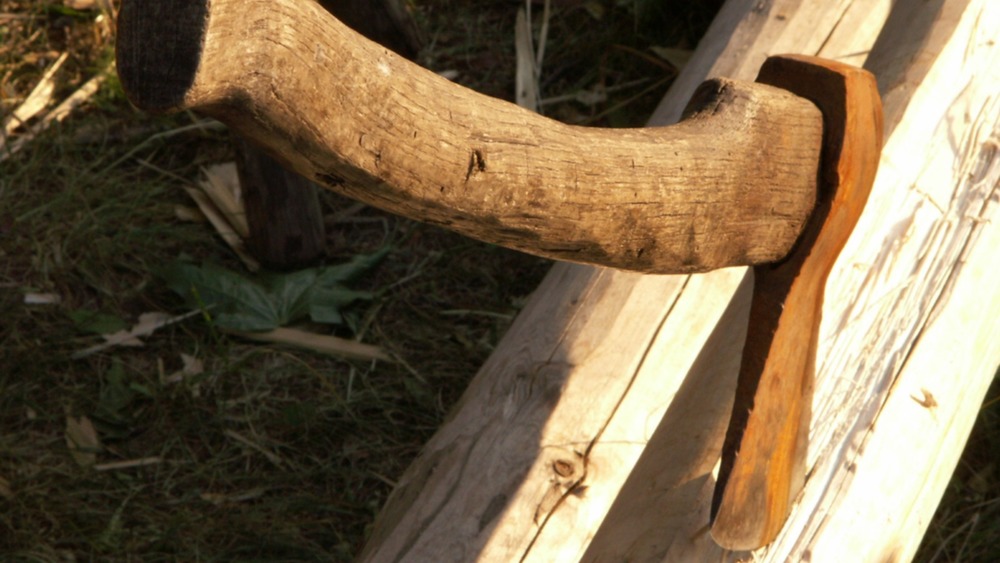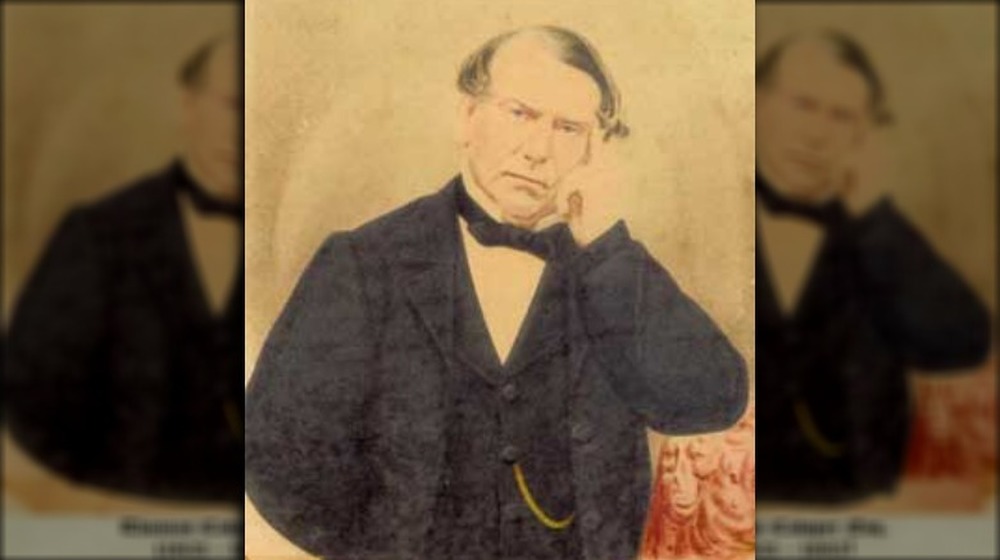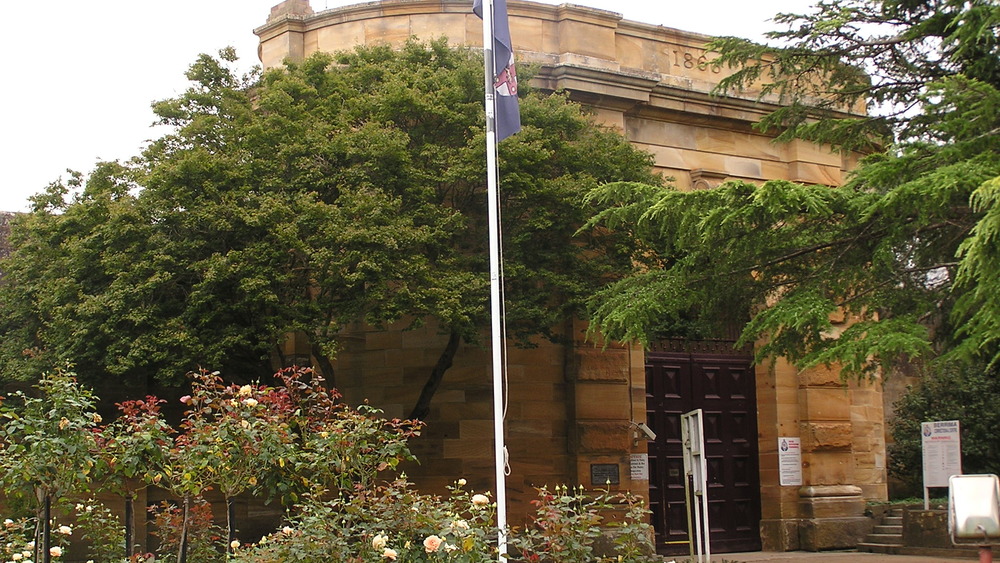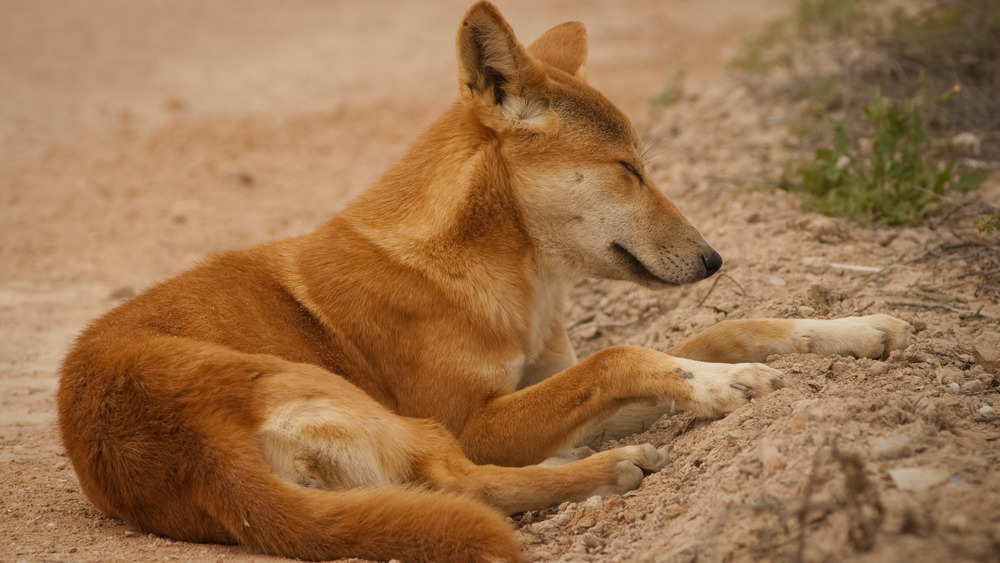The Messed Up Truth About The Berrima Axe Murderer
John Lynch was perhaps the most prolific serial killer in Australian history, killing as many as 10 people between the years of 1835 and 1841. Because of the small town in New South Wales where he was caught and his signature weapon of choice, Lynch gained notoriety under the nickname "the Berrima Axe Murderer."
Headstuff explains that Lynch was born in County Cavan, Ireland, in 1813, where in 1830 he was charged and convicted of "false pretenses," or illicitly gaining property through fraudulent means. More sensational accounts of Lynch's life state that he murdered his father, but this would have been a hanging crime at the time, and instead Lynch was sent to a penal colony in New South Wales to serve a seven year term of servitude as a convict laborer.
The next record of Lynch occurs in 1836, when he pops up as a murder suspect. A farmer for whom Lynch was working as a laborer was robbed and beaten by a gang of bandits on the road. It was widely believed that Lynch was a member of this gang, and indeed the man who incited the robbery due to a grudge he held against the farmer. Another member of the gang, Thomas Smith, gave information on the gang to the police and subsequently turned up dead. Lynch was the primary suspect for Smith's murder, but Lynch defended himself well enough to be found not guilty, a verdict which would have disastrous consequences.
John Lynch gets a taste for axe murder
After Lynch dodged execution for the murder of Thomas Smith, he ended his sentence of forced labor in 1841, at which point he was granted a certificate of freedom. According to Headstuff, Lynch celebrated by immediately stealing eight bulls from a farm where he had worked. When he couldn't get a satisfactory price locally, he decided to drive the bulls to Sydney and sell them there. On the road, he encountered Edmund Ireland and a young Aboriginal boy whose name is not known, who were taking a load of produce and cattle to Sydney. Lynch convinced Ireland that it would be safer to make the 170-mile trip together. It turns out that this wasn't safer for them at all.
Lynch decided that the wagon full of produce and the herd of cattle Ireland was leading were more valuable than his own measly eight bulls, so he used a small axe and murdered both Ireland and the Aboriginal boy, taking their stock as his own. As luck would have it, however, just outside of Sydney, Lynch would run into Thomas Cowper (pictured above), the man who actually owned all that stuff and had hired Ireland to drive it. Lynch lied that Ireland had been injured on the road and had to return home, and that he had been asked to finish the trip on Ireland's behalf. For some reason, Cowper believed him and agreed to meet him with the merchandise in Sydney. Guess who never showed up?
The murders continue
After Lynch secretly sold Cowper's merchandise through a third party, he started making his way back home from Sydney. According to Headstuff, it was at this time that he encountered the Frazers, a father and son who had been tasked with transporting cargo 200 miles to the south on behalf of a man named Samuel Bawtree. Lynch, thinking of how successful he had been at this trick before, suggested that he travel along with the Frazers, and the two other men agreed. Along the way, the Frazers checked in with Bawtree before heading into the wilderness with Lynch, never to be seen again. According to Lynch's own confession, he let the bulls pulling his own cart free and then asked the Frazers for help in rounding them up. As he had done with Ireland before them, Lynch killed the Frazers with his little axe and hid their bodies.
When Bawtree put out notices seeking information on his lost men and goods, investigators started connecting the dots. They found the cart Lynch had stolen from Cowper in Sydney, which he had abandoned in favor of Bawtree's cart after killing the Frazers. Coordinating this information with Cowper led to the realization that Ireland and the Aboriginal boy must have been murdered as well. However, the false name that Lynch had given on the trail led to three other men being wrongfully arrested and Lynch literally getting away with murder ... for now.
A dingo reveals a murder victim
Once John Lynch had returned home to Berrima, he had to find a way to sell the goods he had stolen from Samuel Bawtree. Headstuff explains that Lynch went again to see John Mulligan, the local man whose lowball bid had caused Lynch to go to Sydney to fence his stolen cattle in the first place. Mulligan lived on a ranch with his wife and two teenage step-children. While Lynch and Mulligan were discussing the price for Bawtree's stolen goods, Lynch decided once again that murder was the greatest cost-saver of all. Using a variety of lies and tricks, Lynch murdered the Mulligans one by one and burned their bodies. He then contacted the farm's owner and told him that Mulligan had sold him the lease, using the name John Dunleavy. He lived this way for several months with only minor suspicions surrounding him — until he killed again.
In early 1842, Lynch killed a farmhand, Terence Landregan, for unknown reasons — clubbing him to death, robbing him, and hiding his body by a bridge. On the morning of February 21, Hugh Tinney discovered Landregan's body when he saw a dingo rummaging around it. Witnesses had seen Landregan together with "Dunleavy" before the murder, and when police went to the Mulligan farm, they found Lynch with blood on his shirt as well as the belt he had stolen from Landregan's body. Lynch was found guilty of murder, and Australia's most notorious serial killer was hanged on April 22, 1842.



